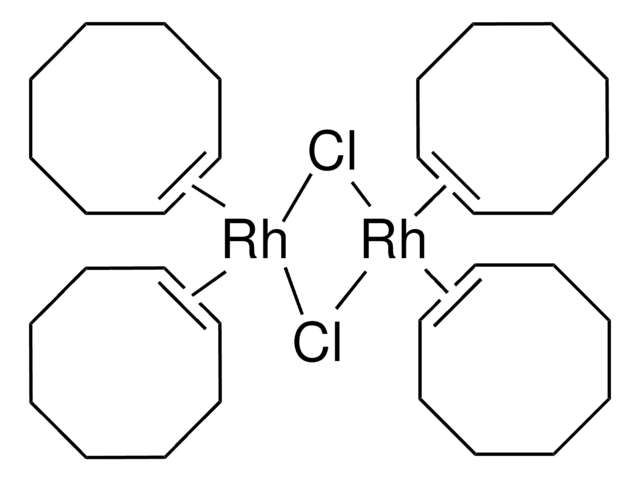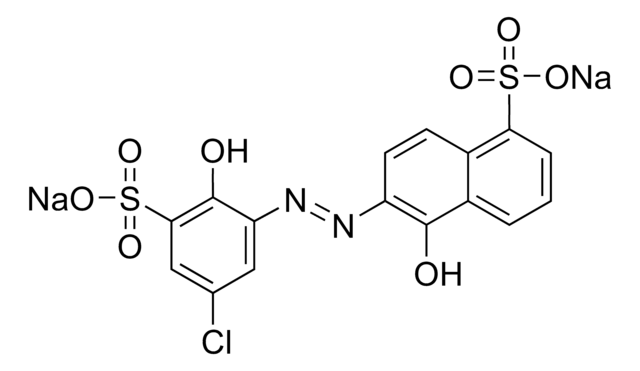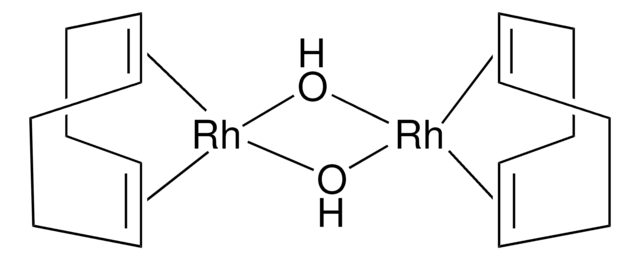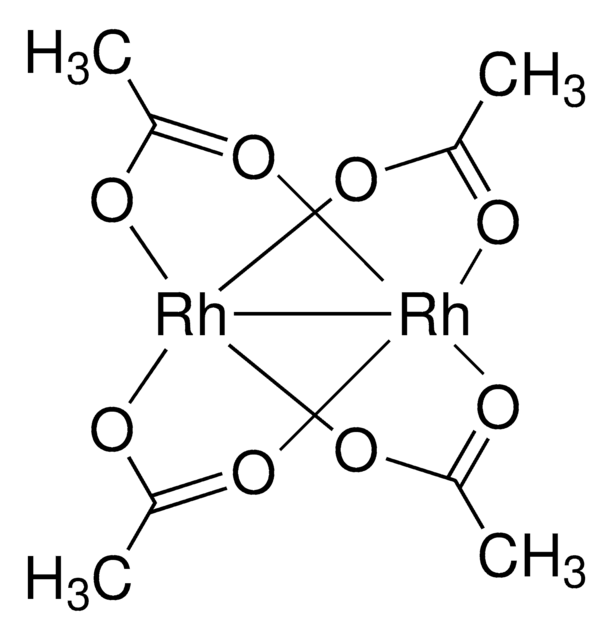209031
Di-μ-chloro-tetracarbonyldirhodium(I)
97%
Synonyme(s) :
Rhodium carbonyl chloride(I), Rhodium(I) carbonyl chloride, Rhodium(I) dicarbonyl chloride dimer, Tetracarbonyldi-μ−chlorodirhodium(I)
About This Item
Produits recommandés
Niveau de qualité
Pureté
97%
Forme
powder
Pertinence de la réaction
core: rhodium
reagent type: catalyst
Pf
120-125 °C (dec.) (lit.)
Température de stockage
2-8°C
Chaîne SMILES
[C-]#[O+].[C-]#[O+].[C-]#[O+].[C-]#[O+].[Cl+]1[Rh-][Cl+][Rh-]1
InChI
1S/4CO.2Cl.2Rh/c4*1-2;;;;/q;;;;2*+1;2*-1
Clé InChI
ODYPMWFHWPMOKS-UHFFFAOYSA-N
Vous recherchez des produits similaires ? Visite Guide de comparaison des produits
Description générale
Application
- Rhodium-Catalyzed Trans-Bis-Silylation Reactions: This study explores the use of Di-μ-chloro-tetracarbonyldirhodium(I) as a catalyst in the synthesis of specialized pyridine derivatives, demonstrating potential for creating complex molecular architectures useful in drug discovery and material science (Naka & Kobayashi, 2023).
- Redox behaviour of imino-β-diketonato ligands: The research investigates the coordination chemistry of Di-μ-chloro-tetracarbonyldirhodium(I) with innovative ligands, potentially opening new pathways for catalytic systems used in pharmaceutical syntheses (Ferreira, Conradie & Conradie, 2022).
- Synthesis of Thiophene-Fused Siloles through Rhodium-Catalyzed Trans-Bis-Silylation: The application of Di-μ-chloro-tetracarbonyldirhodium(I) in the synthesis of thiophene-fused siloles indicates its role in advancing materials chemistry for electronic and photonic applications (Naka et al., 2024).
- Kinetic Study of the Oxidative Addition Reaction between Methyl Iodide and Complexes: Utilizing UV–Vis, IR spectroscopy, this study enhances understanding of the mechanisms involved when using Di-μ-chloro-tetracarbonyldirhodium(I) in catalytic cycles, relevant to both academia and industry settings (Ferreira et al., 2022).
Code de la classe de stockage
11 - Combustible Solids
Classe de danger pour l'eau (WGK)
WGK 3
Point d'éclair (°F)
Not applicable
Point d'éclair (°C)
Not applicable
Équipement de protection individuelle
Eyeshields, Gloves, type N95 (US)
Faites votre choix parmi les versions les plus récentes :
Déjà en possession de ce produit ?
Retrouvez la documentation relative aux produits que vous avez récemment achetés dans la Bibliothèque de documents.
Les clients ont également consulté
Notre équipe de scientifiques dispose d'une expérience dans tous les secteurs de la recherche, notamment en sciences de la vie, science des matériaux, synthèse chimique, chromatographie, analyse et dans de nombreux autres domaines..
Contacter notre Service technique






![Bicyclo[2.2.1]hepta-2,5-diene-rhodium(I) chloride dimer 96%](/deepweb/assets/sigmaaldrich/product/structures/700/585/b2e5ae1d-2b88-42c8-a071-ef828d4a104c/640/b2e5ae1d-2b88-42c8-a071-ef828d4a104c.png)




